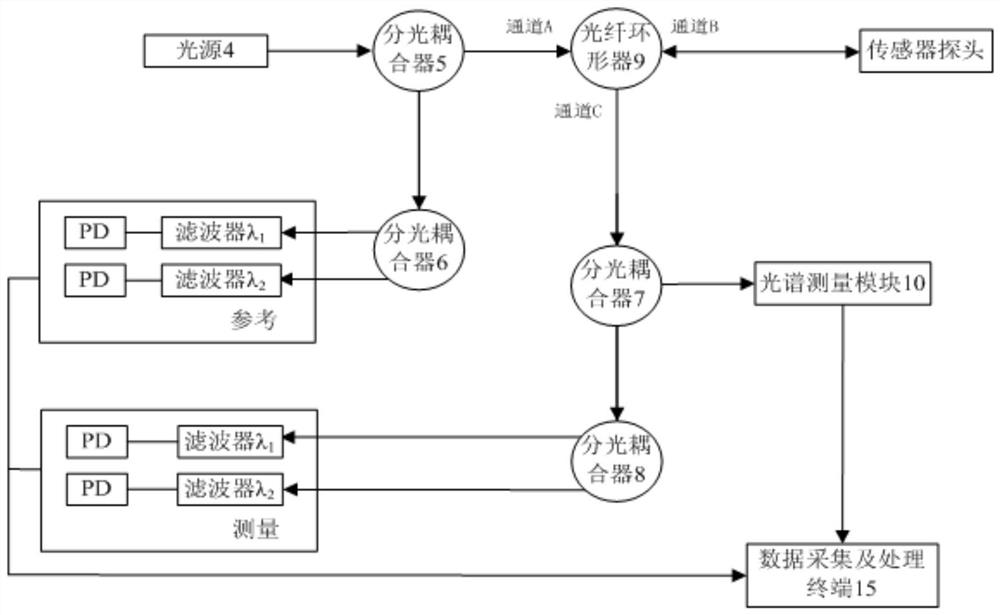A fiber optic efpi sensor demodulation device
A demodulation device and sensor technology, which is applied in the direction of using optical devices to transmit sensing components, etc., can solve problems such as limiting the application of optical fiber EFPI sensors, and achieve the effect of meeting the demodulation requirements of large dynamic range low-frequency signals and breaking through the limitation of dynamic range
- Summary
- Abstract
- Description
- Claims
- Application Information
AI Technical Summary
Problems solved by technology
Method used
Image
Examples
Embodiment 1
[0043] For a typical low-precision optical fiber EFPI strain sensor (the structure diagram is shown in figure 1 ) to carry out high-speed demodulation work. The low-precision optical fiber EFPI strain sensor is composed of two optical fibers, capillaries and fixed points. The end faces of the two optical fibers form the EFPI cavity. Fixed on the structure to be tested. The change of the strain of the structure leads to the change of the distance between the corresponding fixed points of the two optical fibers, and then pulls the optical fiber to move along the capillary, so that the length of the EFPI cavity changes. figure 2 The output spectra of the optical fiber EFPI strain sensor are given when the EFPI cavity length is 100um and 110um respectively. It can be seen that the output spectrum of the optical fiber EFPI strain sensor is approximately a trigonometric function, and the peak value and period vary with the length of the EFPI cavity.
[0044] This embodiment cons...
Embodiment 2
[0052] Using an independent monochromatic light source group as the intensity demodulation light source, the following Figure 6 The high-speed fiber optic EFPI sensor demodulator shown. The device consists of a broadband light source 4, a first monochromatic light source 16, a second monochromatic light source 17, a first optical splitter 5, a second optical splitter 6, an optical fiber WDM multiplexer 18, an optical fiber circulator 9, and an optical fiber WDM wave Splitter 19, volume phase grating CCD spectroscopic measurement module 10, fiber filter 20, first detector combination 13, second detector combination 14 and data acquisition and processing terminal 15. The broadband light source 4 outputs a C-band broadband optical signal (wavelength range 1530-1570nm), and the first monochromatic light source 16 and the second monochromatic light source 17 are respectively the central wavelength λ 1 =1310nm, λ 2 = 1311.7nm narrowband laser. The output optical signals of the b...
PUM
 Login to View More
Login to View More Abstract
Description
Claims
Application Information
 Login to View More
Login to View More - R&D
- Intellectual Property
- Life Sciences
- Materials
- Tech Scout
- Unparalleled Data Quality
- Higher Quality Content
- 60% Fewer Hallucinations
Browse by: Latest US Patents, China's latest patents, Technical Efficacy Thesaurus, Application Domain, Technology Topic, Popular Technical Reports.
© 2025 PatSnap. All rights reserved.Legal|Privacy policy|Modern Slavery Act Transparency Statement|Sitemap|About US| Contact US: help@patsnap.com



